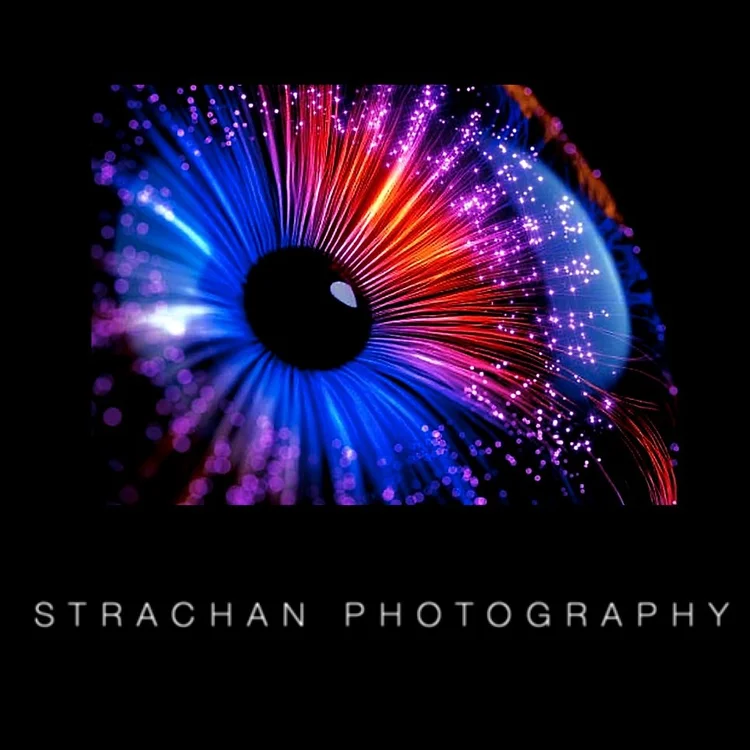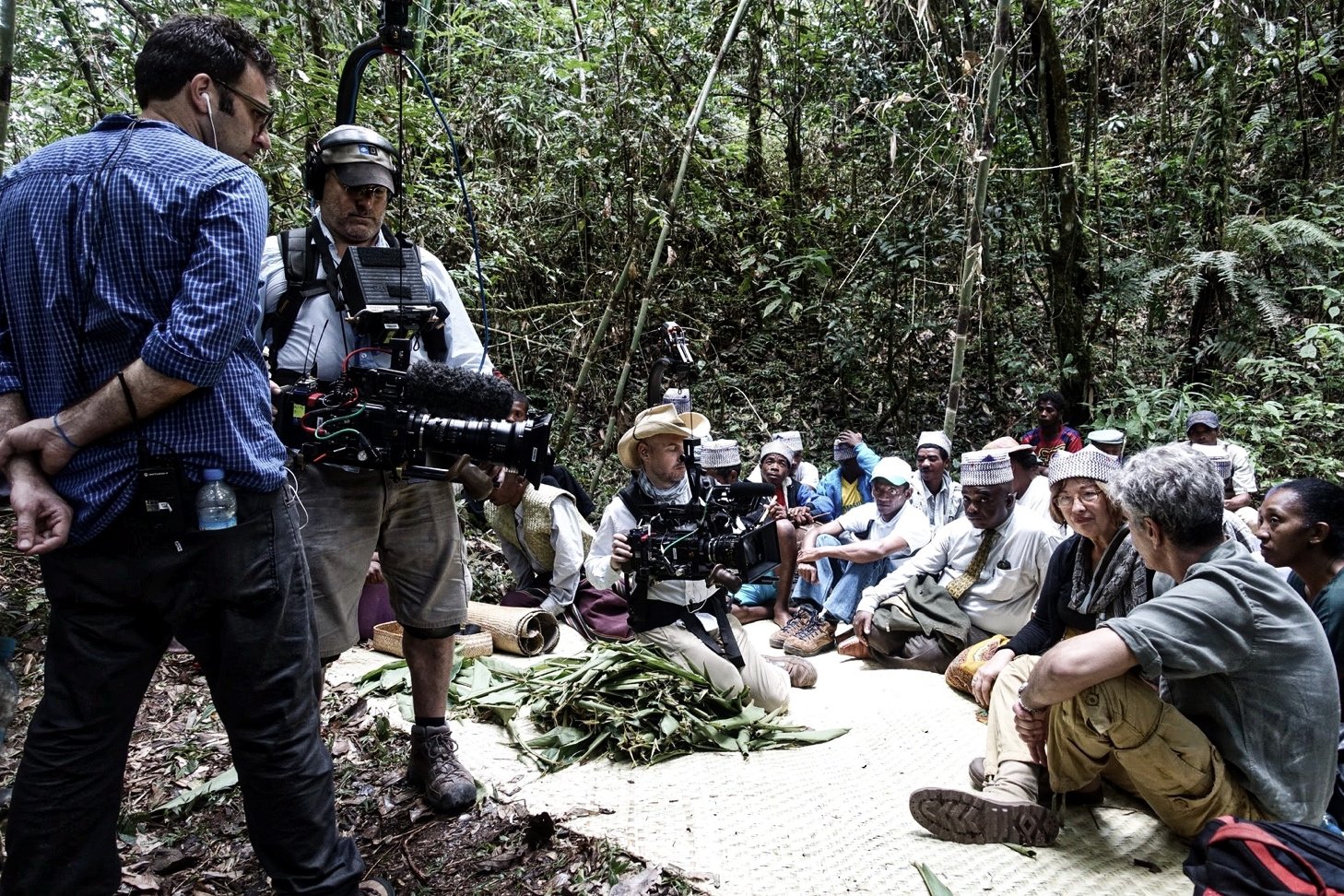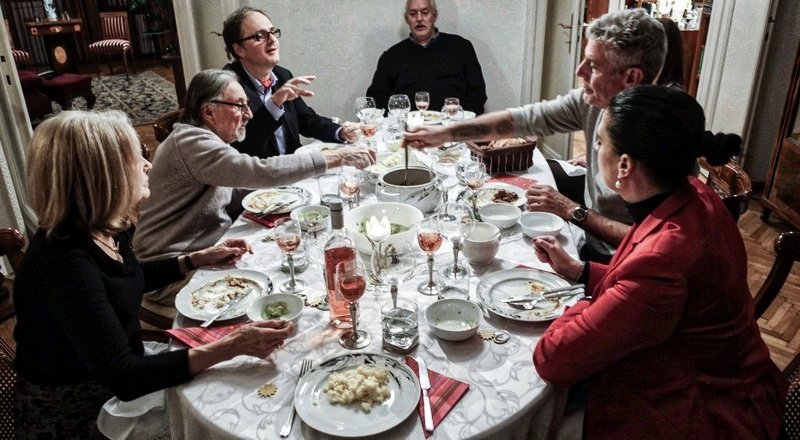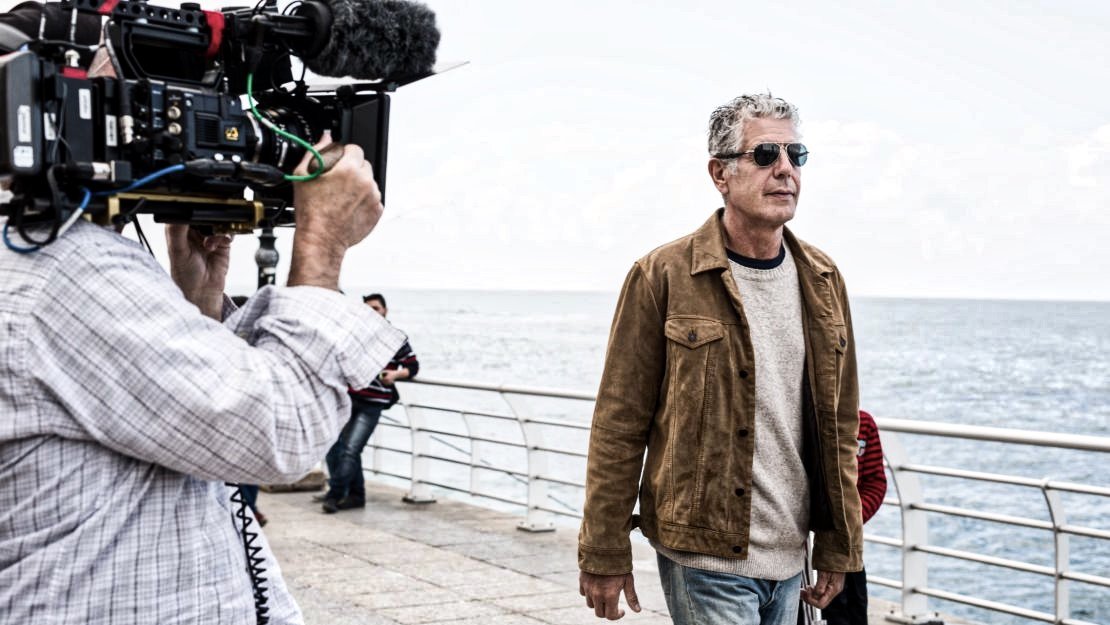“He was a poet of life.” Filmmaker Dareen Aronofsky on Anthony Bourdain, after the two visited Madagascar and then Bhutan for CNN’s Parts Unknown.
Over the years, Anthony Bourdain allowed a great many extraordinary landscapes — his words — only to have them fade into a blur outside his windows. “I’ve looked, maybe seen, maybe noticed, then gone,” he intones in his opening voiceover for Madagascar, the fifth-season episode of CNN’s Parts Unknown that first aired in May 2015.
“We all carry different experiences inside us. We see things differently, don’t we?”
Madagascar, the world’s fourth largest island by area, left an indelible impression on Bourdain’s psyche, and the result is plain to see in Parts Unknown. The journey which Bourdain undertook with avant-garde filmmaker Darren Aronofsky (Pi, Requiem for a Dream, Black Swan, and others) caught him in an unusually pensive, reflective mood, even by his standards. The break-up of his first marriage affected him deeply, and Madagascar, an island of almost unparalleled beauty — and scene of almost apocalyptic environmental ruin — will remind long-time Bourdain followers of his 2011 visit to Haiti for No Reservations, which he undertook during a cholera outbreak shortly after an earthquake killed 3,000 people in a single day, and with a hurricane looming on the horizon. A moment toward the end of Madagascar, in which Bourdain and Aronofsky are surrounded by hungry children while sampling a smorgasbord of local food delicacies, has uncomfortable parallels with a similar moment in that No Reservations episode in Haiti, where Bourdain broke bread and talked social injustice with Sean Penn, who was running a local aid project at the time.
“Madagascar,” Bourdain continues in his opening monologue, “exotic, unspoiled paradise, or microcosm for the end of times?”
Real life is no Disney cartoon. This much we knew, of course, but this Madagascar really breaks it down.
Over the years, there have been any number of reasons to watch Parts Unknown, even a decade after its making, but Madagascar is unique in that it provides viewers a glimpse into the process of making one of these episodes — a look, if you will, of how the sausage is made.
That’s in no small part because Bourdain wanted the episode to reflect Aronofsky’s signature style of filmmaking — surrealism, rooted in social consciousness. Visually striking but also emotionally involving. Entertaining and reflective by turns.
In an essay Bourdain penned for CNN’s Field Notes at the time, he shared some of the deepest thoughts of his entire 12-season odyssey with Parts Unknown.
“Travel is not always comfortable,” he wrote, “even when the scenery is at its most beautiful. Look out the window, get too close, and the reality of the situation — the world you will soon be leaving behind — intrudes.
“On Parts Unknown … we make choices all of the time. Choices about what I will show you of what I saw and experienced during my limited time in a destination, and choices about what I won’t. It’s my show. I decide where we go. I decide what we do when we get there. And I decide what we show you when we edit down 60 to 80 hours of footage to 42 minutes.
“That is a manipulative process. And not, inherently anyway, a bad one. I want you, the viewer, to feel the way about a place the way I want you to feel. I want you to look at it and see it from my point of view, if at all possible. Or at least consider other points of view.
“But it is, almost always, one point of view—or one lens through which you see: mine.”
At the time time, people often asked Bourdain what it would be like to accompany him on a film shoot.
“Now you will see. We look at Madagascar, in many ways, through Darren’s fresh set of eyes. It’s a useful reminder, worth having, that what you see on the show is not the only angle. That we are looking at the world out my window, but that there are other windows — that maybe I’ve omitted or shaded something, if only to present myself in a more flattering light.”
Aronofsky approached Bourdain interestingly, not the other way around.
Bourdain was “thrilled, honoured and delighted” — again, his words — to draw the attention of an acclaimed filmmaker whose work he admired, but he had one proviso.
“My only request was that he shoot some footage—with whatever device he wanted to use. And that, at some point, he give us his version of at least a portion of the show for which we have already seen my version.
“So, in Act 6, you will get an example of what may or may not be missing from the shows we make. An ugly, uncomfortable reminder that it’s not just pretty pictures and neat, hopeful sum-ups. It does not, I’m pretty sure, portray me in the best light. Or any of us, for that matter. But there it is. I thought it was important.”
When Bourdain passed on 8 June 2018 — years ago now, though it still feels like yesterday — Aronofsky was among those CNN approached to pen a eulogy of sorts. The two would later travel together to the mountain kingdom of Bhutan for a Parts Unknown episode.
Aronofsky’s words, written just four days after Bourdain’s passing, resonate to this day.
“I was asked to share some thoughts on my time with Tony in Madagascar and Bhutan,” he began. “I’ve been staring at a blank page for days. His death is incomprehensible. I don’t know how to process him being gone.
“I do remember how easily words flowed from him. He made it seem so effortless. He was a poet of life. So I’ll let that inspire whatever flows now.”
And, at the end:
“You turned a light on what it means to be a human right now, right here on planet Earth.
“Thank you for letting me tag along and witness a master storyteller shape the unexpected into the relatable and unforgettable.
“I will never forget how passionate you were about life and this world. You loved love, cinema, food, artists, people, idiosyncrasies, pain, relief, martial arts, chefs, music, the Lower East Side. You loved the whole damn world (even the parts you despised). And the whole world loved you.”
Bourdain was seemingly incapable of producing an underwhelming hour of television, even with the passing of time, but Madagascar, for me, is on a whole other level. Now seems as good a time as any to revisit it.
Supplementary reading:
https://explorepartsunknown.com/bhutan/anthony-bourdain-darren-aronofsky/










